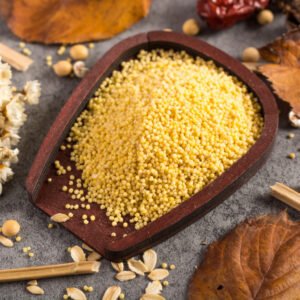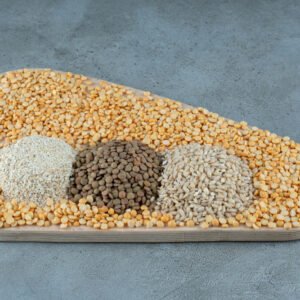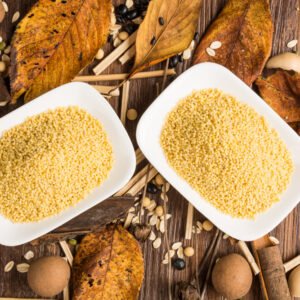When comparing turmeric vs saffron, most people assume the answer is straightforward. One costs a few dollars per pound, while the other rivals the price of gold. But value isn’t just about cost. Both spices hold special places in Indian cuisine, traditional medicine, and global markets. Let’s break it down.
Understanding the Golden Spices
India produces over 78% of the world’s turmeric and remains a major player in the saffron trade. Both spices share a golden hue, but that’s where the similarities end. These botanically different plants serve distinct purposes in kitchens and markets worldwide.
Turmeric comes from the Curcuma longa plant, a rhizome similar to ginger. Farmers harvest it year-round in tropical climates, making it accessible and affordable. Saffron costs between $5 and $20 per gram, while turmeric costs roughly $2 to $5 per pound. That’s not a typo. The price gap between these spices stretches wider than almost any other comparison in the culinary world.
Also Read:- Top 10 Starch Manufacturers in India
Price Comparison: Turmeric vs Saffron
Here is why the cost difference matters. Saffron prices in 2025 range from $2,800 to $3,000 per kilogram, making it one of the most expensive spices on earth. Retail stores in major cities like New York charge $7 to $12 per gram, and buyers pay premium prices for quality grades.
Turmeric, by contrast, offers exceptional value. A kilogram of turmeric powder costs $4 to $10 in most markets. This makes it accessible to everyone, from home cooks to commercial food manufacturers.
What drives saffron’s astronomical price?
Each saffron flower produces only a few threads, and workers must pick them carefully by hand. It takes approximately 150,000 flowers to produce one kilogram of dried saffron. The harvest window lasts just a few weeks each autumn. Labor costs, limited growing regions, and meticulous processing all contribute to the final price.
Turmeric grows abundantly across India, particularly in Telangana, Maharashtra, and Tamil Nadu. Mechanical harvesting and processing keep costs low. CMS Industries sources premium turmeric directly from Indian farmers, ensuring quality while maintaining competitive pricing for global buyers.
Culinary Applications and Flavor Profiles
Both spices add color to dishes, but their flavors differ completely. Turmeric brings earthy, slightly bitter notes with a peppery finish. It works well in curries, rice dishes, soups, and marinades. Most Indian households use turmeric daily.
Saffron delivers floral, honey-like sweetness with subtle hay-like undertones. Chefs prize it for biryanis, kheer, and festive sweets. A tiny pinch transforms an entire dish, providing both aroma and a distinctive yellow-orange color.
Can you substitute one for the other? Not really. While both provide color, turmeric cannot replicate saffron’s unique taste and aroma. Some recipes call for turmeric as a budget-friendly coloring agent, but true saffron dishes lose their character without the real thing.
Health Benefits and Medicinal Properties
Both spices appear extensively in Ayurvedic medicine and modern wellness products. Turmeric contains curcumin, a compound studied for its anti-inflammatory properties. Research suggests it may support joint health, digestive wellness, and immune function. People consume it in golden milk, supplements, and cooking.
Saffron contains crocin, safranal, and picrocrocin. Studies examine its potential effects on mood, memory, and oxidative stress. Traditional medicine systems use it for various purposes, from digestive support to skin care.
The health benefits debate between turmeric vs saffron doesn’t have a clear winner. Turmeric’s widespread availability makes it easier to incorporate into daily routines. Saffron’s concentrated nature means small amounts may provide benefits, but the cost limits regular consumption for many people.
Production and Global Trade
India dominates turmeric production, growing roughly 80% of the global supply. Major producing states include Telangana, Tamil Nadu, Maharashtra, Andhra Pradesh, and Karnataka. The country exports turmeric to over 150 countries, with Bangladesh, United States, United Arab Emirates, and United Kingdom as top importers.
Saffron cultivation requires specific climate conditions. Iran produces about 90% of the world’s supply, but India grows high-quality saffron in Kashmir. Spanish and Greek varieties also hold reputation for excellence. The Kashmir saffron industry faces challenges from climate change, water scarcity, and competition from cheaper imports.
CMS Industries specializes in sourcing and exporting authentic Indian spices, including premium turmeric varieties. As a trusted agricultural products manufacturer and supplier in Gujarat, the company connects farmers with international markets while maintaining quality standards.
Market Value: Beyond the Price Tag
When asking which spice holds more value, consider multiple factors:
- Economic accessibility: Turmeric’s low cost means billions of people worldwide can afford it. It appears in everyday cooking across Asia, Africa, and increasingly in Western countries. The global turmeric market reached $130 million in 2024 and continues growing.
- Cultural significance: Saffron carries prestige. It appears in wedding celebrations, religious ceremonies, and special occasion meals. Gifting saffron represents luxury and thoughtfulness. This cultural capital adds to its perceived value.
- Commercial applications: Both spices extend beyond food. Turmeric appears in cosmetics, natural dyes, and dietary supplements. Saffron finds its way into perfumes, luxury skincare products, and pharmaceutical preparations.
- Sustainability: Turmeric farming supports millions of small-scale farmers in India. It grows relatively easily and provides reliable income. Saffron cultivation, while lucrative per kilogram, requires specific expertise and climate conditions, limiting who can produce it profitably.
Storage and Quality Considerations
Proper storage protects your investment in both spices. Turmeric powder stays fresh for about two years in an airtight container away from light and moisture. Fresh turmeric root lasts several weeks refrigerated.
Saffron requires careful handling. Store it in an airtight container in a cool, dark place. Quality deteriorates after one to two years. Real saffron threads should have deep red color with slight orange tips. Avoid crushed saffron powder, which is easier to adulterate.
When purchasing from suppliers like CMS Industries, buyers receive quality-assured products with proper certifications and traceability. This matters especially for commercial buyers who need consistent quality for their products.
Making the Choice for Your Needs
So which spice offers more value? The answer depends on your purpose.
Choose turmeric if you want:
- Affordable daily cooking ingredient
- Regular wellness support
- Versatile spice for multiple cuisines
- Reliable supply for commercial production
- Budget-friendly natural coloring
Choose saffron if you need:
- Luxury ingredient for special dishes
- Unique floral flavor profile
- High-value export product
- Premium gift item
- Specialty culinary applications
Many professional kitchens, food manufacturers, and spice traders stock both. They serve different purposes and appeal to different market segments.
The Future of Both Spices
Global demand for both turmeric and saffron continues rising. Health-conscious consumers seek natural ingredients with traditional use histories. The turmeric supplement market alone expects to reach $200 million by 2027. Saffron’s luxury status remains secure as disposable incomes rise in developing economies.
Climate change poses challenges for both crops. Turmeric farmers adapt by improving irrigation and exploring new varieties. Saffron growers face more serious concerns as traditional growing regions experience temperature shifts and water stress.
Agricultural suppliers like CMS Industries play an important role in maintaining quality supply chains. By working directly with farmers and implementing sustainable sourcing practices, companies help ensure both spices remain available for future generations.
Connect with Quality Spice Suppliers
Whether you need bulk turmeric for food manufacturing, premium saffron for specialty products, or a reliable supply of authentic Indian spices, choosing the right supplier makes all the difference. CMS Industries offers a comprehensive range of agricultural products, including premium turmeric, sourced directly from Indian farmers and processed to maintain quality and nutritional content.
For businesses seeking consistent quality, competitive pricing, and reliable delivery of Indian spices, connecting with established agricultural exporters ensures your supply chain remains strong. Explore options that align with your business needs and quality standards.
Frequently Asked Questions
Q: Can I use turmeric instead of saffron in recipes?
Turmeric can substitute for saffron as a coloring agent, but it won’t replicate the unique floral flavor and aroma. Use turmeric when you need golden color on a budget. Reserve real saffron for dishes where its distinctive taste matters, like biryani or paella. They’re different spices with different purposes.
Q: Why is saffron so much more expensive than turmeric?
Saffron requires hand-harvesting of delicate threads from crocus flowers during a short autumn season. Workers need approximately 150,000 flowers to produce one kilogram. The labor-intensive process, limited growing regions, and meticulous handling create high costs. Turmeric grows abundantly and can be mechanically harvested, keeping prices low.
Q: Which spice has better health benefits?
Both offer health benefits studied in research. Turmeric’s curcumin shows anti-inflammatory properties and supports joint health. Saffron contains compounds studied for mood and memory support. Neither is objectively “better.” Turmeric’s affordability makes regular consumption practical, while saffron’s cost limits daily use for most people.
Q: How can I tell if saffron is real or fake?
Real saffron threads show deep red color with slightly lighter orange tips. Drop a thread in warm water. Genuine saffron releases color slowly and retains its shape. Fake saffron dissolves quickly or colors water immediately. Real saffron costs $5 to $20 per gram. Prices far below this range signal potential adulteration.
Q: Which spice is better for commercial food production?
Turmeric suits commercial production better due to consistent supply, affordable pricing, and versatile applications. Food manufacturers use it in curry powders, ready-to-eat meals, beverages, and snacks. Saffron works for premium specialty products where higher ingredient costs align with luxury positioning and pricing strategies.




